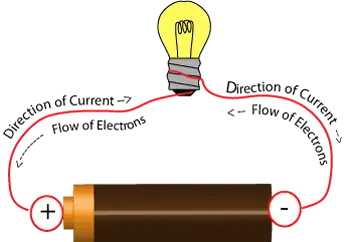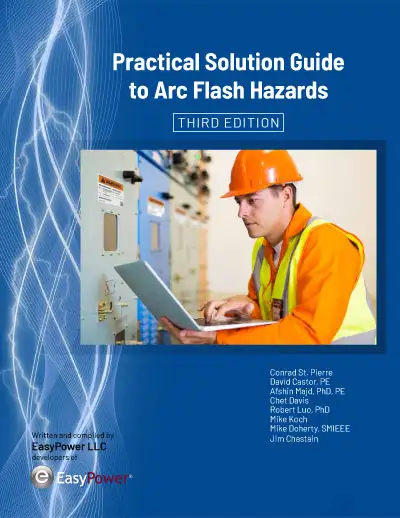Step Up Transformer - Power Distribution
By R.W. Hurst, Editor

Substation Maintenance Training
Our customized live online or in‑person group training can be delivered to your staff at your location.

- Live Online
- 12 hours Instructor-led
- Group Training Available
Download Our OSHA 4474 Fact Sheet – Establishing Boundaries Around Arc Flash Hazards

- Understand the difference between arc flash and electric shock boundaries
- Learn who may cross each boundary and under what conditions
- Apply voltage-based rules for safer approach distances
A step up transformer increases voltage from a lower level to a higher level while reducing current. It is commonly used in power transmission, renewable energy systems, and industrial applications to improve efficiency and minimize energy loss over long distances.
What is a Step Up Transformer?
The step up transformer, sometimes called a step, plays a crucial role in power distribution systems. It is vital in increasing voltage levels for various applications, ensuring efficient power transmission across long distances.
✅ Increases low input voltage to a higher output voltage for efficient power delivery.
✅ Used in power grids, renewable energy, and industrial equipment.
✅ Reduces current to minimize heat, energy loss, and improve transmission efficiency.
Electrical Transformer Maintenance Training
Substation Maintenance Training
Request a Free Training Quotation
Real-World Voltage and Efficiency Data
Typical generator step-up (GSU) transformers at power plants convert medium voltage, ranging from around 6 to 20 kV, to 110 to 410 kV for efficient long-distance transmission. At these high voltages, transmission line losses, caused by resistance and Joule heating, are significantly reduced. Modern step-up transformers typically achieve efficiency ratings exceeding 95%, with advanced core materials designed to minimize core loss and enhance energy efficiency.
Construction: Core & Windings
A step up transformer is designed to increase the voltage of alternating current (AC) using magnetic induction. It consists of a primary coil and a secondary coil wound around a ferromagnetic core, usually made of laminated iron to reduce eddy current losses. The primary coil receives input voltage, while the secondary coil outputs a higher voltage.
The voltage increase depends on the turns ratio, which is the number of turns in the secondary coil compared to the primary coil. If the secondary coil has more turns, the voltage is “stepped up.” This ratio also defines the current reduction on the secondary side, improving transmission efficiency. Different transformer designs, including distribution and isolation types, are outlined in our detailed article on different types of transformers.
Sign Up for Electricity Forum’s Utility Transformers Newsletter
Stay informed with our FREE Utility Transformers Newsletter — get the latest news, breakthrough technologies, and expert insights, delivered straight to your inbox.
Step-Up Transformer Calculation Table (Turns Ratio & Voltage Relationship)
| Parameter | Formula | Example |
|---|---|---|
| Turns Ratio (TR) | TR = Ns / Np | If Ns = 200 turns, Np = 100 turns → TR = 2 |
| Output Voltage (Vs) | Vs = Vp × (Ns / Np) | If Vp = 10 kV, Ns/Np = 2 → Vs = 20 kV |
| Output Current (Is) | Is = Ip × (Np / Ns) | If Ip = 100 A, Ns/Np = 2 → Is = 50 A |
| Power (P) | P = V × I (ideally constant) | 10 kV × 100 A = 1 MW (input = output approx.) |
| Efficiency (η) | η = (Pout / Pin) × 100 | If Pin = 1 MW, Pout = 0.97 MW → η = 97% |
Vector Connection Types
Step up transformers commonly use delta‑wye (Δ‑Y) configurations for power transmission, which provide phase shifting and better fault tolerance. In some systems, wye‑wye (Y‑Y) connections are used, but delta‑wye is preferred for generator step-up (GSU) applications due to reduced harmonic distortion and improved load balancing. The choice of vector group directly impacts the transformer's performance, insulation requirements, and the way currents circulate between primary and secondary windings.
Step Up vs Step Down Transformers
While step up transformers increase voltage, step down transformers reduce voltage for safe distribution to homes and businesses. Both rely on the same principle of magnetic induction but differ in coil configurations and voltage ratios. For a detailed comparison, see our guide on step down transformers. To explore how transformers adjust voltage for safe power delivery, see our guide on step down transformers.
Step-Up vs Step-Down Transformer Comparison Table
| Feature | Step-Up Transformer | Step-Down Transformer |
|---|---|---|
| Voltage Change | Increases low voltage to high voltage | Decreases high voltage to low voltage |
| Current Change | Reduces current while increasing voltage | Increases current while reducing voltage |
| Primary Coil Turns | Fewer turns | More turns |
| Secondary Coil Turns | More turns | Fewer turns |
| Common Use | Power generation, transmission lines | Residential, commercial distribution |
| Efficiency Impact | Reduces I²R losses in transmission | Prepares safe, usable voltages |
Standard Voltage Ratios & Turn Ratio
The key to understanding how a step up transformer increases voltage lies in the number of turns in each coil. A cross-section shows that when there are more turns on the secondary coil than the primary coil, the voltage is "stepped up." This voltage increase is determined by the transformer ratio, which is calculated by dividing the number of turns in the secondary coil by the number of turns in the primary coil. The transformer turns ratio is also equal to the ratio of the secondary voltage to the primary voltage. The role of transformer performance and testing is covered in our in-depth overview of transformer testing.
Applications
Step up transformers are used in various applications, including power distribution, which converts low-voltage (LV) electricity from power plants into high-voltage (HV) electricity. This process allows for efficient electric power transmission over long distances, as higher voltage levels reduce transformer losses caused by resistance in the transmission lines. Additionally, step up transformers can be used in industrial equipment and medical imaging systems that require high voltages for optimal performance.
In contrast, a step down transformer serves the opposite function, decreasing voltage levels to match the requirements of electrical devices or systems. Both step up and step down transformers work based on the same magnetic induction principle but differ in their coil configurations.
Several factors influence the efficiency, including the quality of the magnetic core, the design of the primary and secondary side windings, and the insulation materials used to prevent short circuits. Units with high-quality magnetic cores and well-designed coils can minimize energy losses and ensure maximum efficiency.
Selecting the appropriate step up transformer size requires careful consideration of the devices or systems it will use. They can recommend the correct ratio, voltage winding, and rating required for your specific application by providing a detailed list of the equipment and their maximum outputs to a supplier.
Maintenance & Safety
Safety is of paramount importance for a step up transformer. Since these transformers handle high voltages, it is essential to follow the manufacturer's guidelines and adhere to local electrical codes. Additionally, ensuring proper grounding, using appropriate personal protective equipment, and conducting regular maintenance checks can help minimize potential hazards. For applications where three-phase power must be converted, a 3-phase to single-phase transformer is essential for efficient energy transfer.
They play a pivotal role in increasing voltage levels for various applications, ensuring efficient power transmission and distribution. By understanding their workings, applications, and factors that affect their efficiency, users can make informed decisions when selecting and using these essential electrical components.
Related Articles








